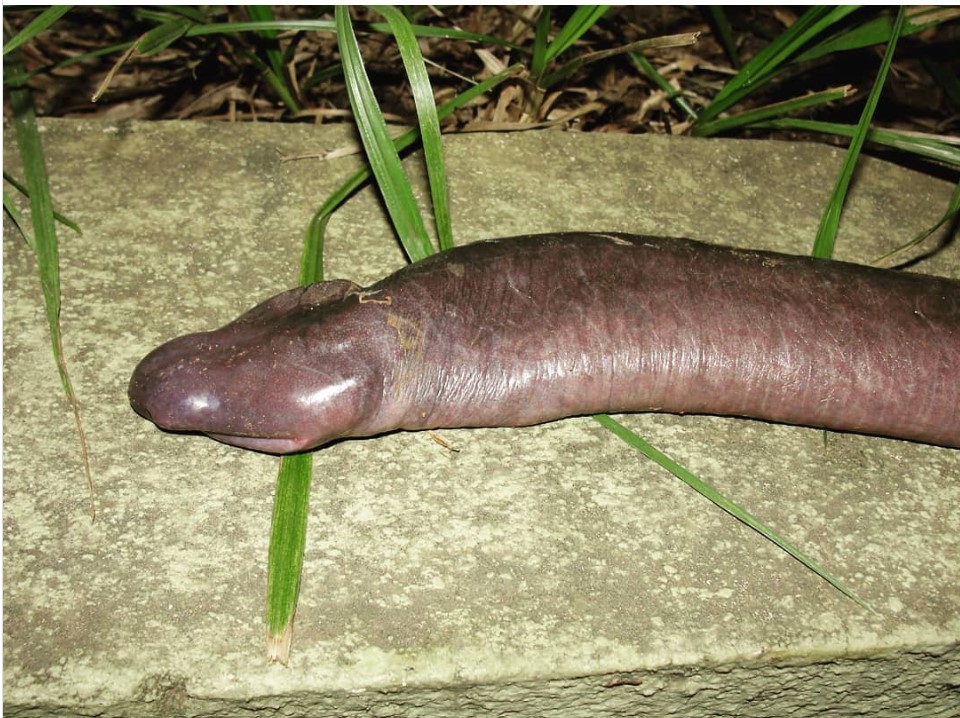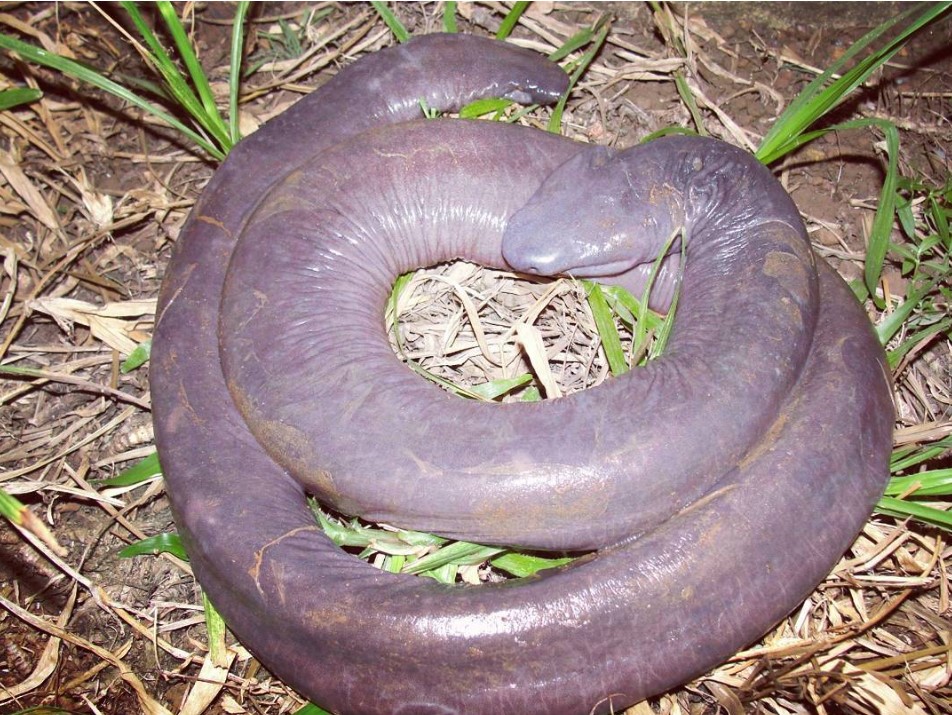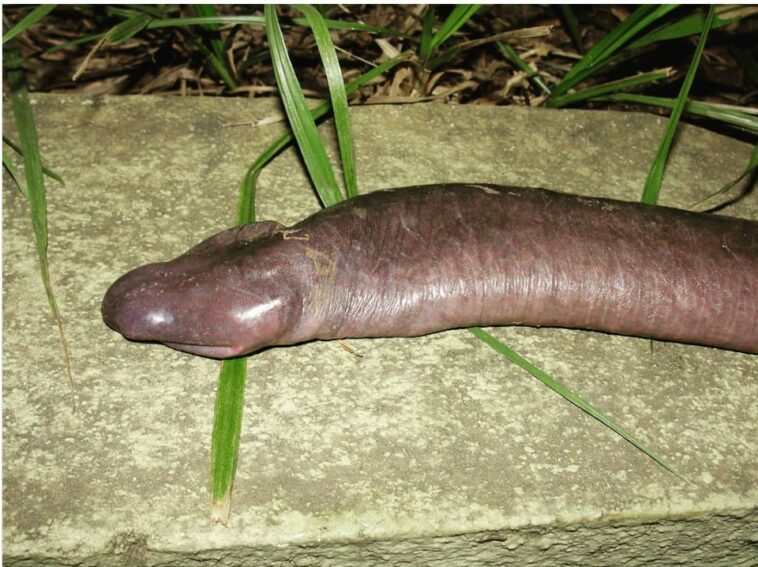There are many creatures in the world that we do not know at all and they make the world turn your head. I’m actually the first to think that this photo is a joke.
But it turned out to be a real animal.
Throughout history, objects with phallic shapes have always managed to grab attention and ignite curiosity. A few years ago, a series of images began circulating on the web, showcasing a creature that left many shaking their heads in disbelief.

Sporting a distinctive appearance, the mysterious and odd-looking animal earned itself a series of fitting nicknames including the “penis snake”, “blind snake” or the “man-aconda”.
But really it is not as it seems.
Despite its striking resemblance to a snake, the creature is known as Atretochoana eiselti, and defies expectations by belonging to a completely different category of animal. It’s actually an amphibian more closely related to the salamander and the largest of the few known lungless tetrapods.
This strange animal lives in Brazil in the waters of the Amazon and was discovered very late. It was first discovered by Sir Graham Hales during an expedition with Sir Brian Doll in the late 1800s.
In 2011, this species of caecilian was rediscovered in the Amazonas. Residing exclusively within the Amazon River and its largest tributary, the Madeira River in Brazil, the “penis snake” has remained an exclusive inhabitant of this particular region, with no documented sightings reported elsewhere across the globe.

The viral pictures that took the internet by storm a couple of years ago date back to 2011, when an entire family of phallic-shaped creatures was collected at the bottom of the Madeira River in Brazil. They were found when the river was drained while examining a hydroelectric dam.
Another enigma surrounds their respiratory system, as the method by which they breathe remains unconfirmed. The discovery of the six specimens in 2011 added another layer of complexity to this puzzle. Particularly intriguing was the location of their findings, with limited cold, fast-flowing water. It is known that warmer water contains less oxygen, making their lungless existence even more extraordinary.
Based on these recent findings, it is believed that the species has a wide distribution throughout the Brazilian Amazon and potentially extends into Bolivia as well.

Nature never ceases to amaze us with its boundless wonders and constant surprises. From the depths of the oceans to the highest mountaintops, the natural world is an endless source of fascination and discovery.



